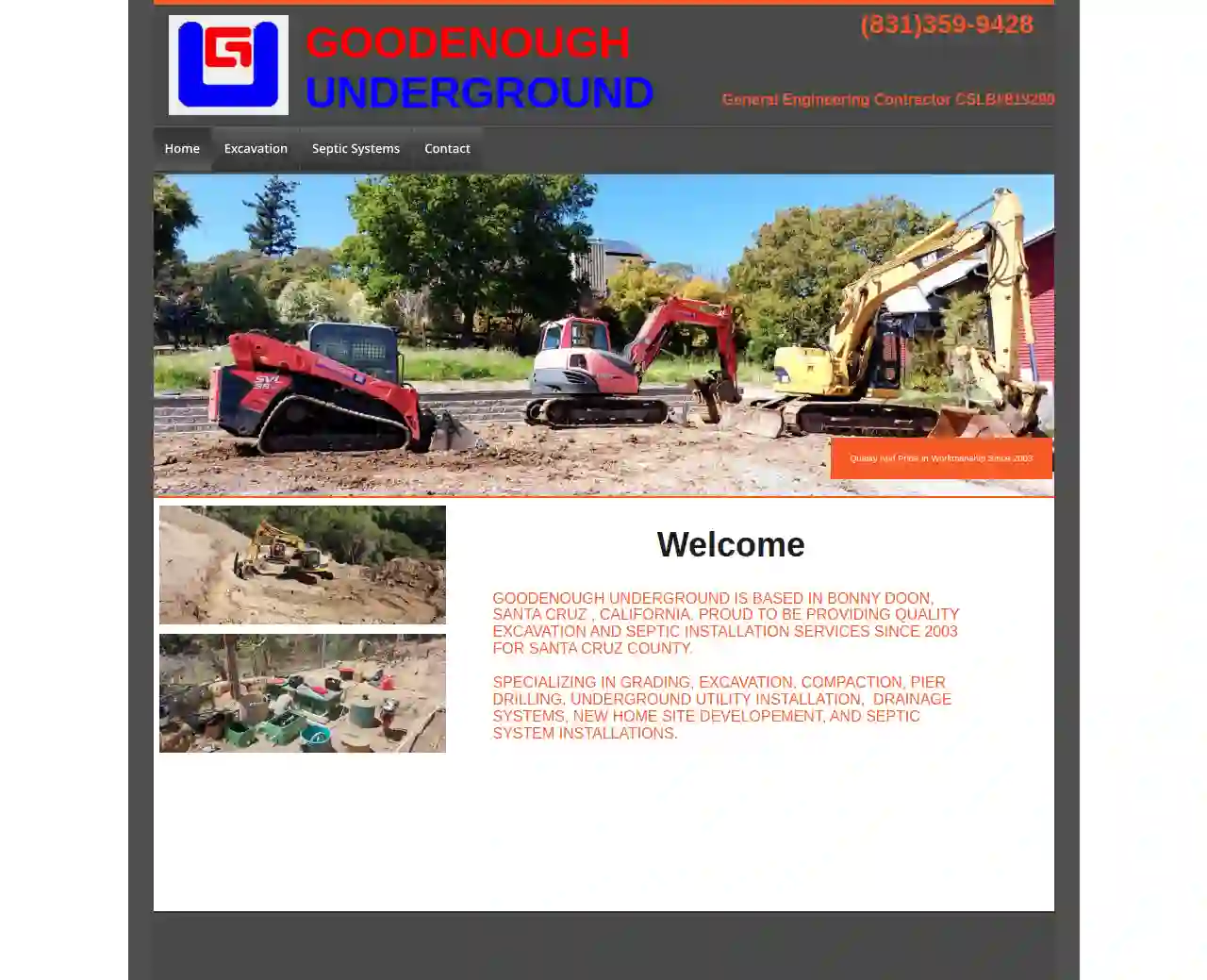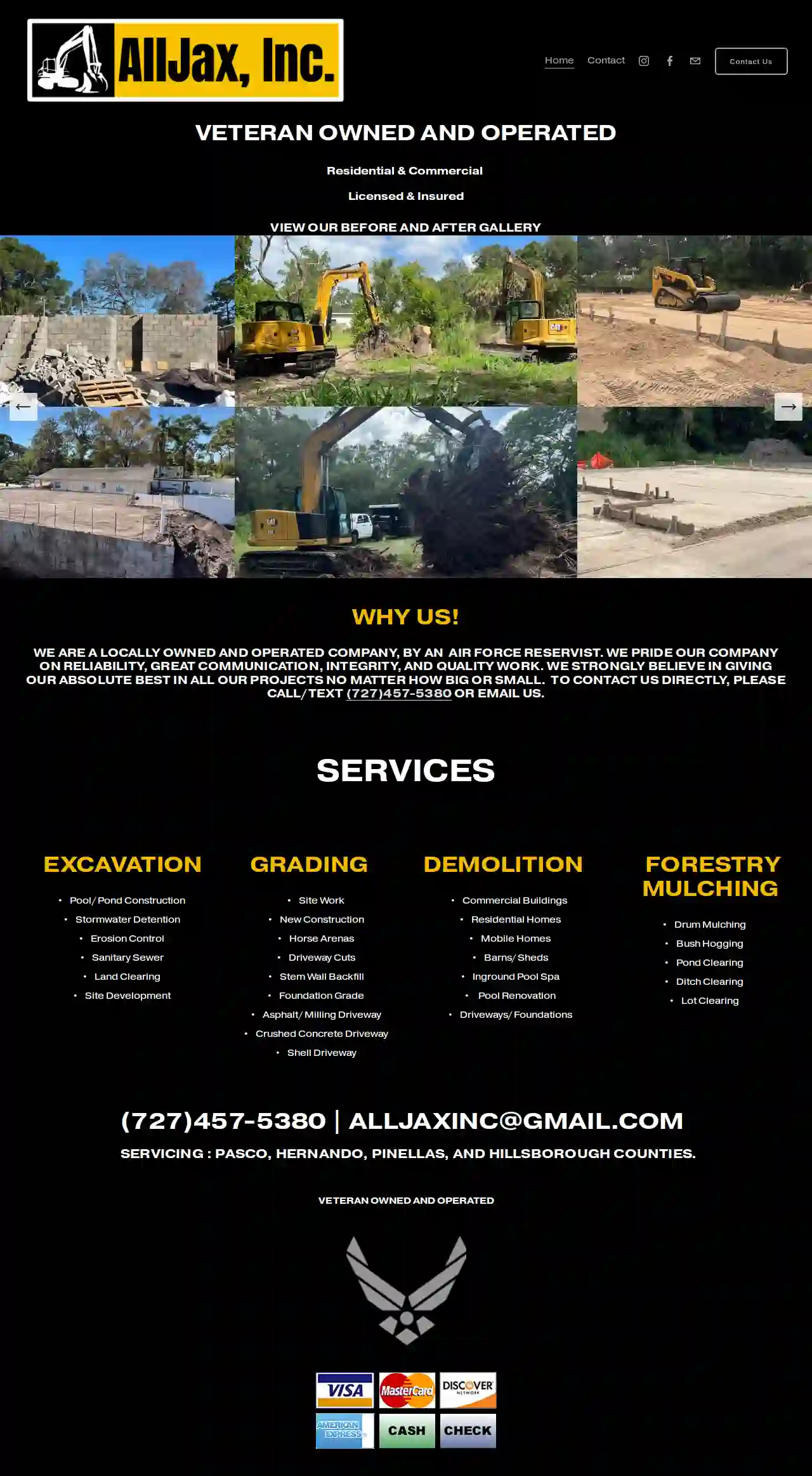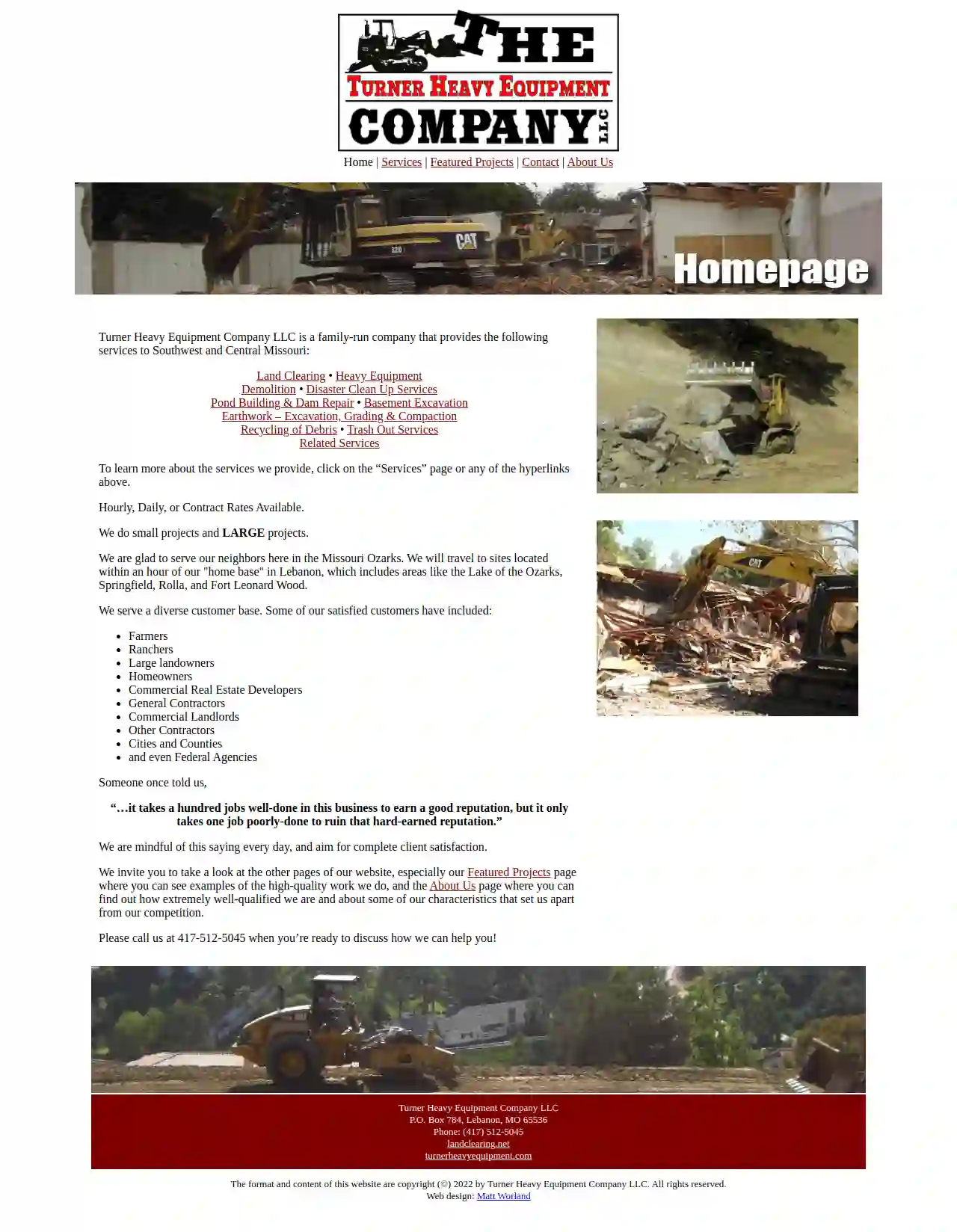Demolition Contractors Downey
Best Demolition Companies in Downey
Get 3 FREE Building Demolition quotes for your project today! Compare profiles, reviews, accreditations, portfolio, etc... and choose the best deal.

Souza Construction & Electric
52 reviews586 So. Farmersville Blvd., Farmersville, 93223, USSouza Construction Inc. is a growing construction business, striving ever forward to become a premier general contractor. From our beginning as a “one-man show”, until our present state as a “multi-faceted” team, one thing has remained constant, a commitment to customer service. It is this commitment that has helped Souza Construction Inc. nearly double its sales every year for the last four years. We firmly believe that it will be this continuing commitment that will assist us in continuing this phenomenal growth pattern. Essential to this excellent service are our capabilities as a builder and a business. THE SOUZA COMMITMENT Souza Construction Inc. has committed itself to recruiting and training leaders in both the construction and professional world. Assembling a team of this caliber is not a quick or simple process, but requires diligent research, highly refined discernment, and continuous assessment. However, it is just this level of commitment and attention to detail that sets us apart. Souza Construction Inc. has made this our primary goal: understanding our customers and their needs, utilizing excellence in the field and in administration, and combining this with an unwavering commitment to customer satisfaction; this is Souza Construction Inc.
- Services
- Why Us?
- Testimonials
- Gallery
Get Quote
JPI Development Group, Inc.
44 reviewsTemecula, US- Services
- Why Us?
Get Quote
Applied EarthWorks
51 reviews1391 W. Shaw Ave., Fresno, 93711, USApplied EarthWorks: Ethical Consultants for Project Success Applied EarthWorks is a company with over 28 years of experience in cultural and paleontological resource management. We are committed to effective and affordable strategies that achieve progress and preservation, working together with our clients to ensure that projects are completed in a way that respects the environment and cultural heritage. We are certified by the California Department of General Services (DGS) as both a Small Business Enterprise (SBE) and a Small Business for Public Works (SB-PW).
- Services
- Why Us?
- Accreditations
- Gallery
Get Quote
Fontana Concrete Company
3.73 reviewsFontana, USFontana Concrete Company | Flat Work and Masonry Contractor Our team is ready for any concrete project all year round for the homeowners in Fontana! For instance, Concrete or masonry services may be needed to fix cracks or seal gaps in driveways, sidewalks, patios, brick walls, and other areas on your property. If any of this sounds like it applies to you, then contact us today! We will schedule a free estimate with one of our experts to provide a quote tailored to your needs. Give us a call at (909) 766-9768 to get free estimates. Top of the Line Concrete and Masonry Contractor in Fontana, California Fontana Concrete Company is the leading concrete and masonry company in Fontana. We specialize in a wide variety of services, including concrete, patios, sidewalks, pools, garage floors, and more! One of our most popular services is installing fresh concrete – we specialize in working with homeowners to make sure you get exactly what you need. No matter your needs or budget, we have a solution for you! Contact us today at (909) 766-9768 to learn more about how we can help give your home that perfect finishing touch. Fontana Concrete Company understands that when it comes time to improve or add on to your property, one of the first things people think about are their driveways and walkways – they’re key features when it comes time to sell a house or show off your landscaping. We offer many different concrete services, including stamping, coloring, and decorative work, to make sure you get the look you want – all at an affordable price! Fontana Concrete Company has been working in Fontana for many years, and our experience means we know what works best when it comes time to renovate or improve your property. When you choose us as your contractor of choice, you can expect quality craftsmanship and honest pricing that won’t break the bank! Our commitment is 100% customer satisfaction, so call us today at (909) 766-9768 for a free estimate on any of our products or services.
- Services
- Why Us?
- Gallery
Get Quote
GOODENOUGH UNDERGROUND INC.
57 reviewsBonny Doon, USGOODENOUGH UNDERGROUND IS BASED IN BONNY DOON, SANTA CRUZ , CALIFORNIA. PROUD TO BE PROVIDING QUALITY EXCAVATION AND SEPTIC INSTALLATION SERVICES SINCE 2003 FOR SANTA CRUZ COUNTY. SPECIALIZING IN GRADING, EXCAVATION, COMPACTION, PIER DRILLING, UNDERGROUND UTILITY INSTALLATION, DRAINAGE SYSTEMS, NEW HOME SITE DEVELOPEMENT, AND SEPTIC SYSTEM INSTALLATIONS.
- Services
- Why Us?
- Our Team
- Gallery
Get Quote
Excavating Contractor Los Angeles
59 reviewsLos Angeles, USWelcome to Bobcat Excavating Services Los Angeles As an excavation services and bobcat services provider in Los Angeles, we at BSLA – Bobcat Services Los Angeles help our clients with any processes that involve removal of earth from the ground, transfer of earth from one site to another, backfilling of earth to previously excavated spaces, and modification of sites to suite various clients’ needs. Are you building or remodeling your outdoor space? Chances are that we can be of help. If you searched for “excavators near me” for you got to the right place! We are experts when it comes to excavation, bobcat services, compacting, filling and grading. We work on residential sites, commercial sites, and industrial locations. We are licensed and insured and all our machine operators are vigorously skilled in handling our heavy machinery and providing precision results.
- Services
- Why Us?
- Gallery
Get Quote
AllJax Inc Excavation, Forestry Mulching & Pond Clearing
4.935 reviewsDavis, USAllJaxInc is a locally owned and operated company, run by an Air Force reservist. We take pride in our reliability, excellent communication, integrity, and high-quality work. We are committed to delivering our best on every project, big or small. We are dedicated to providing exceptional service to our clients in Pasco, Hernando, Pinellas, and Hillsborough Counties. Our team is experienced in a wide range of services, including excavation, pool and pond construction, stormwater detention, erosion control, sanitary sewer, land clearing, site development, forestry, demolition, and grading. We are fully licensed and insured, and we are proud to be a Veteran Owned and Operated business. To contact us directly, please call/text (727)457-5380 or Email Us.
- Services
- Why Us?
- Gallery
Get Quote
Magnum Land Clearing Inc.
1Santa Clarita, US- Services
- Why Us?
Get Quote
H.I.G Contractors
54 reviews123 Main Street, Anytown, 12345, USAbout HIG Contractors HIG Contractors is a family-owned and operated business with over 20 years of experience in the construction industry. We are committed to providing our clients with high-quality workmanship and exceptional customer service. We specialize in a wide range of construction services, including: Residential construction Commercial construction Renovations Additions Roofing Siding Windows and doors Decks and patios And more! We are fully licensed and insured, and we are proud to be a member of the Better Business Bureau. We are committed to providing our clients with a positive and stress-free construction experience. We work closely with our clients to ensure that their project is completed on time and within budget. We are also committed to using environmentally friendly building practices whenever possible. If you are looking for a reliable and experienced construction company, look no further than HIG Contractors. We are dedicated to providing our clients with the highest quality construction services available.
- Services
- Why Us?
- Testimonials
Get Quote
Cascade Environmental
51 reviews22722 29th Drive SE, Ste 228, Bothell, 98021, USWho We Are Cascade Environmental is a field services contractor that partners with our clients to provide seamless environmental and geotechnical solutions, from concept to completion. Over the last 25+ years, Cascade has grown from a Northwest US regional drilling company into a national, full service organization offering innovative solutions for every step of your project. Mission To contribute to a sustainable future through environmental investigation and restoration. Vision To be the premier company that leverages safety, employee expertise, technology, and sustainability to continuously outperform our competition in the infrastructure and environmental remediation industry. Core Values We believe in providing a workplace free of recognized hazards for the safety, health and well-being of our employees and clients. We believe in growing our business in a responsible manner through significant investment in our people, our company, and our communities. We believe in exceeding expectations in everything we do. We believe in working together to achieve goals thru integrity, accountability, and trust. CASCADE ENVIRONMENTAL® Cascade Environmental is the leading field services provider of environmental and geotechnical drilling, site investigation, and remediation. We offer the full suite of drilling technologies including sonic, auger, rotary, and direct push. Our crews are experienced in traditional and high resolution site characterization technologies for groundwater sampling and analysis, contaminant mass and distribution, and other in situ data for detailed and accurate conceptual site models. We also offer a line of injectable amendments designed to help you reach site closure faster and cost-effectively. Who We Are Our experts understand the importance of accurate sampling regardless of geologic conditions. Whether a discrete or representative sample is needed, Cascade has the tools and technologies to obtain it. Our experienced crews can obtain samples from soil, rock and even the most difficult subsurface conditions. Cascade offers a full range of environmental drilling and sampling services for nearly any application. We conduct soil, soil gas, and groundwater sampling, including discrete and representative sampling, vertical aquifer profiling, and bedrock coring.
- Services
- Why Us?
- Gallery
Get Quote
Over 3,943+ Excavation Contractors on our platform
Our excavation contractors operate in Downey & surrounding areas!
ExcavationHQ has curated and vetted Top Excavation Contractors arround Downey. Find a top & trustworthy contractor today.
Frequently Asked Questions About Demolition Contractors
- Enclosure: Sealing off the asbestos-containing material to prevent fiber release.
- Encapsulation: Coating the asbestos-containing material with a sealant to bind the fibers.
- Removal: Carefully removing the asbestos-containing material and disposing of it safely.
- Site Security: Secure the demolition site with fencing and warning signs to prevent unauthorized access.
- Personal Protective Equipment (PPE): Workers should wear appropriate PPE, including hard hats, safety glasses, gloves, and steel-toe boots.
- Hazardous Material Removal: Properly identify and remove asbestos, lead paint, or other hazardous materials before demolition begins.
- Utility Disconnections: Disconnect all utilities, such as electricity, gas, and water, before demolition.
- Controlled Demolition Techniques: Employ controlled demolition methods to minimize risks and ensure the structure comes down safely.
- Dust Control: Implement dust suppression measures, such as water spraying or misting, to reduce airborne particles and protect air quality.
- Emergency Planning: Have an emergency plan in place, including communication protocols and evacuation procedures, in case of unforeseen events.
- Recycling: Concrete, brick, metal, and wood can be recycled and reused in other construction projects, reducing waste sent to landfills.
- Landfill Disposal: Non-recyclable materials are disposed of in designated landfills according to local regulations.
- Donation: Some materials, such as fixtures or appliances, may be suitable for donation to charitable organizations.
- Permits and Regulations: Obtain all necessary demolition permits and comply with local building codes and environmental regulations.
- Contracts: Have a clear and comprehensive contract with the demolition contractor outlining the scope of work, payment terms, and liabilities.
- Environmental Laws: Comply with environmental laws regarding hazardous material removal, waste disposal, and pollution control.
- Neighboring Property Rights: Respect neighboring property rights and take measures to prevent damage or disruption to adjacent properties.
- Worker Safety: Adhere to worker safety regulations and provide a safe working environment for demolition crews.
What are the different methods of asbestos abatement?
What are the safety precautions for demolition?
What happens to the debris after demolition?
What are the legal considerations for demolition projects?
What are the different methods of asbestos abatement?
- Enclosure: Sealing off the asbestos-containing material to prevent fiber release.
- Encapsulation: Coating the asbestos-containing material with a sealant to bind the fibers.
- Removal: Carefully removing the asbestos-containing material and disposing of it safely.
What are the safety precautions for demolition?
- Site Security: Secure the demolition site with fencing and warning signs to prevent unauthorized access.
- Personal Protective Equipment (PPE): Workers should wear appropriate PPE, including hard hats, safety glasses, gloves, and steel-toe boots.
- Hazardous Material Removal: Properly identify and remove asbestos, lead paint, or other hazardous materials before demolition begins.
- Utility Disconnections: Disconnect all utilities, such as electricity, gas, and water, before demolition.
- Controlled Demolition Techniques: Employ controlled demolition methods to minimize risks and ensure the structure comes down safely.
- Dust Control: Implement dust suppression measures, such as water spraying or misting, to reduce airborne particles and protect air quality.
- Emergency Planning: Have an emergency plan in place, including communication protocols and evacuation procedures, in case of unforeseen events.
What happens to the debris after demolition?
- Recycling: Concrete, brick, metal, and wood can be recycled and reused in other construction projects, reducing waste sent to landfills.
- Landfill Disposal: Non-recyclable materials are disposed of in designated landfills according to local regulations.
- Donation: Some materials, such as fixtures or appliances, may be suitable for donation to charitable organizations.
What are the legal considerations for demolition projects?
- Permits and Regulations: Obtain all necessary demolition permits and comply with local building codes and environmental regulations.
- Contracts: Have a clear and comprehensive contract with the demolition contractor outlining the scope of work, payment terms, and liabilities.
- Environmental Laws: Comply with environmental laws regarding hazardous material removal, waste disposal, and pollution control.
- Neighboring Property Rights: Respect neighboring property rights and take measures to prevent damage or disruption to adjacent properties.
- Worker Safety: Adhere to worker safety regulations and provide a safe working environment for demolition crews.